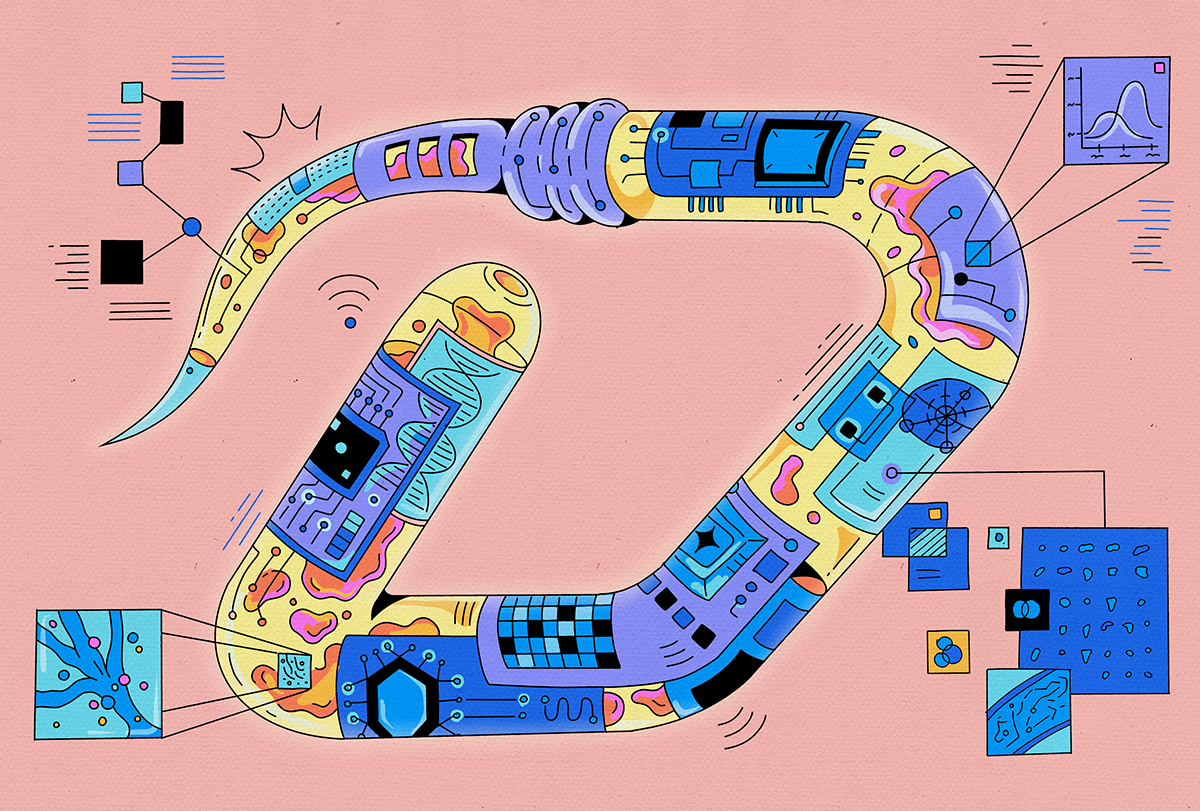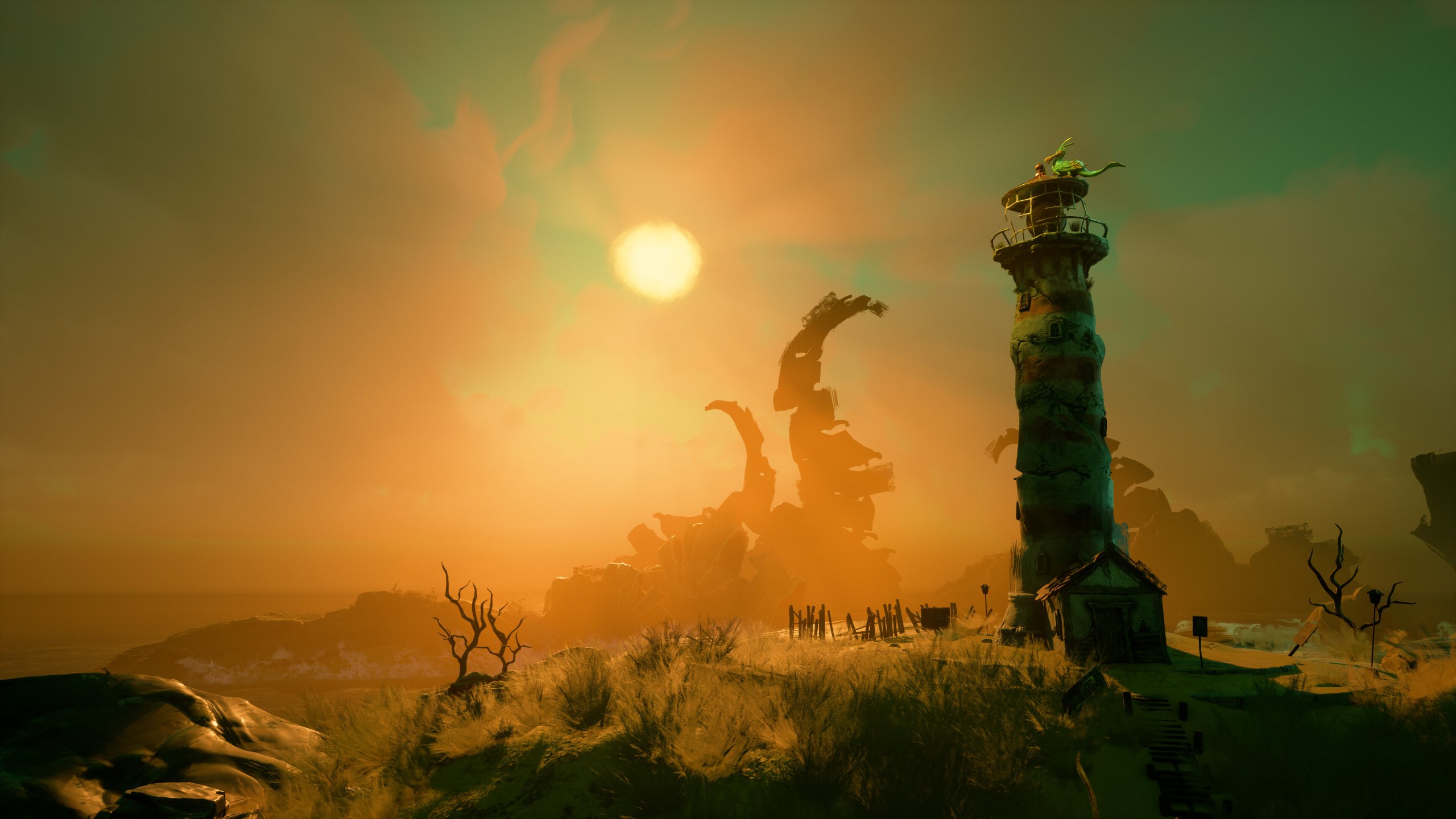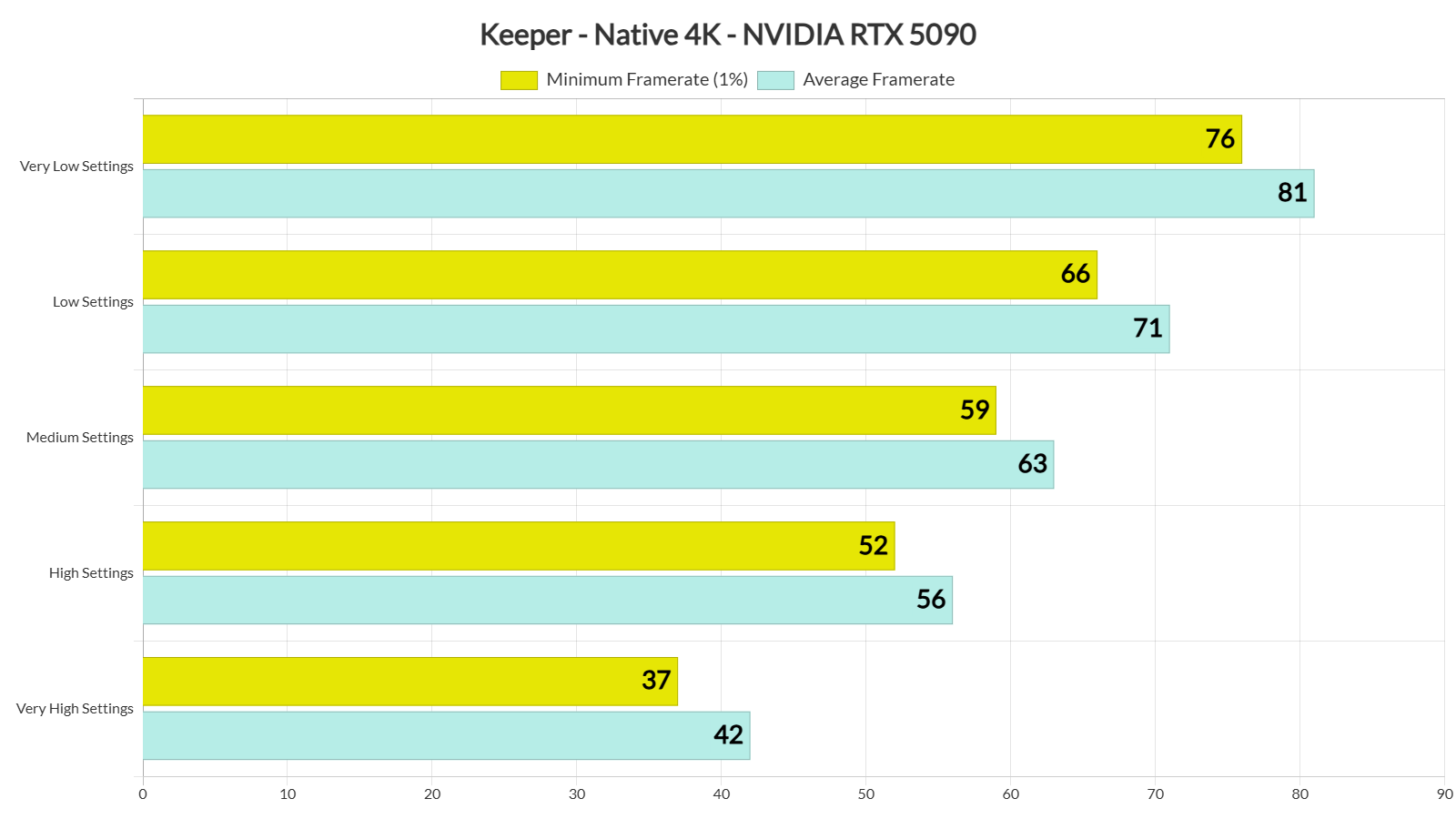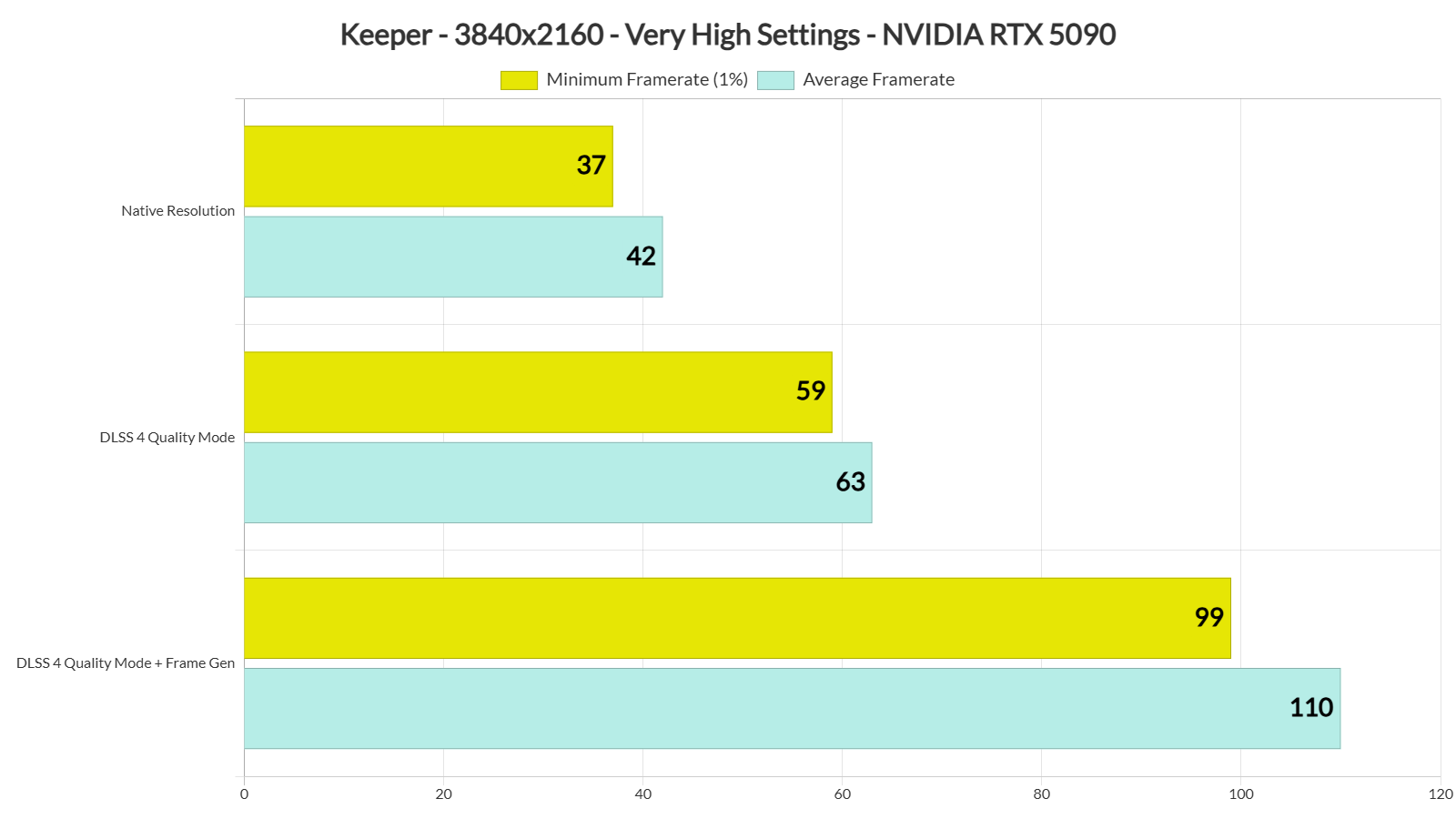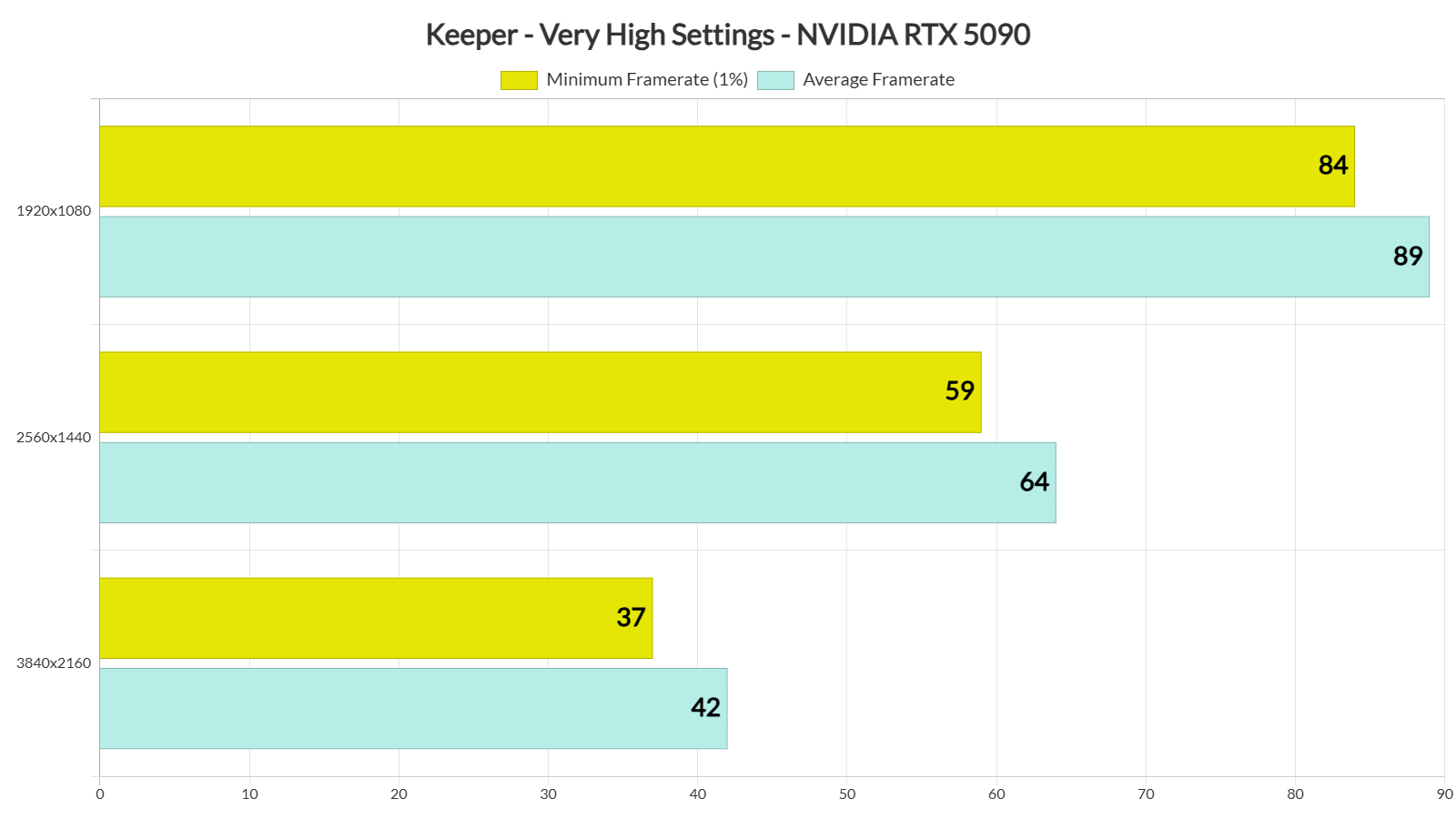Last week, Microsoft released a new game from Double Fine, called Keeper. Keeper is an atmospheric puzzle adventure that uses Unreal Engine 5. So, let’s see whether this new UE5 game can run smoothly on a high-end GPU like the NVIDIA RTX 5090.
For these early tests, I used an AMD Ryzen 9 7950X3D, 32GB of DDR5 at 6000Mhz, and the NVIDIA GeForce RTX 5090. I also used Windows 10 64-bit, and the GeForce 581.57 driver.
Keeper does not have a built-in benchmark tool. So, for our tests, I used the following scene. This appeared one of the most demanding areas you can find early in the game.
At Native 4K/Very High Settings, the NVIDIA RTX 5090 is unable to come close to 60FPS. In fact, to get 60FPS at Native 4K without any framerate drops, you’ll have to use the Medium Settings. On an NVIDIA RTX 5090. Ouch.
The main reason behind this mediocre performance is, you guessed it, Lumen. The perforfmance gains of lowering the in-game settings are not that great. So, the only meaningful way to improve performance here is by using an upscaler.
Keeper supports AMD FSR 3.0, NVIDIA DLSS 4 and Intel XeSS 2.0. The game also supports Frame Gen for all of them.
By using NVIDIA DLSS 4 Quality Mode, we were able to get a smooth gaming experience. As I said, this is a really GPU-heavy area we are benchmarking. Other areas will run much better. Then, with DLSS 4 Frame Gen, we were able to get to 100FPS. I’ve also tried 8K and, suprisingly enough, the game was playable. This is mostly because Keeper is a slow-paced game. As such, I did not really feel the extra input latency of DLSS 4 Frame Gen.
Now, the problem with Keeper is that its visuals do not justify these huge GPU requirements. I understand why the devs chose to use Nanite and Lumen. These helped speed up development. But, as a customer, I don’t really care about such things. What I see here is something that could have been easily achieved with the older rasterized methods.
The big problem of most UE5 games is not that they use Lumen and Nanite, or how demanding these techs are. The problem is that they do not offer a fallback option. Ideally, UE5 games should offer support for Lumen and Nanite for high-end owners. For mid or low-end users, there should be an option to disable them. This means that there should be support for both Ray Tracing and Rasterization. As it is, Keeper – and other UE5 games – only support Ray Tracing (I’ve said numerous time and I’ll say it again. Lumen is a form of Ray Tracing. That’s why it’s so demanding).
All in all, Keeper is a really GPU-heavy title. While most of us understand the reason why it’s so demanding, the average gamer will be put off by its performance. This a valid complain. The devs decided to rely on UE5’s latest tech to speed up development, and that has backfired. And, let’s be honest. If the game looked like The Matrix Tech Demo (or like a CG trailer), no one would be complaining about it. But, there is nothing in Keeper that will “wow” you. This doesn’t look like a next-gen game. It’s an indie-looking game that could have been easily achieved with the older traditional rasterized techhniques!

John is the founder and Editor in Chief at DSOGaming. He is a PC gaming fan and highly supports the modding and indie communities. Before creating DSOGaming, John worked on numerous gaming websites. While he is a die-hard PC gamer, his gaming roots can be found on consoles. John loved – and still does – the 16-bit consoles, and considers SNES to be one of the best consoles. Still, the PC platform won him over consoles. That was mainly due to 3DFX and its iconic dedicated 3D accelerator graphics card, Voodoo 2. John has also written a higher degree thesis on the “The Evolution of PC graphics cards.”
Contact: Email
First Appeared on
Source link







